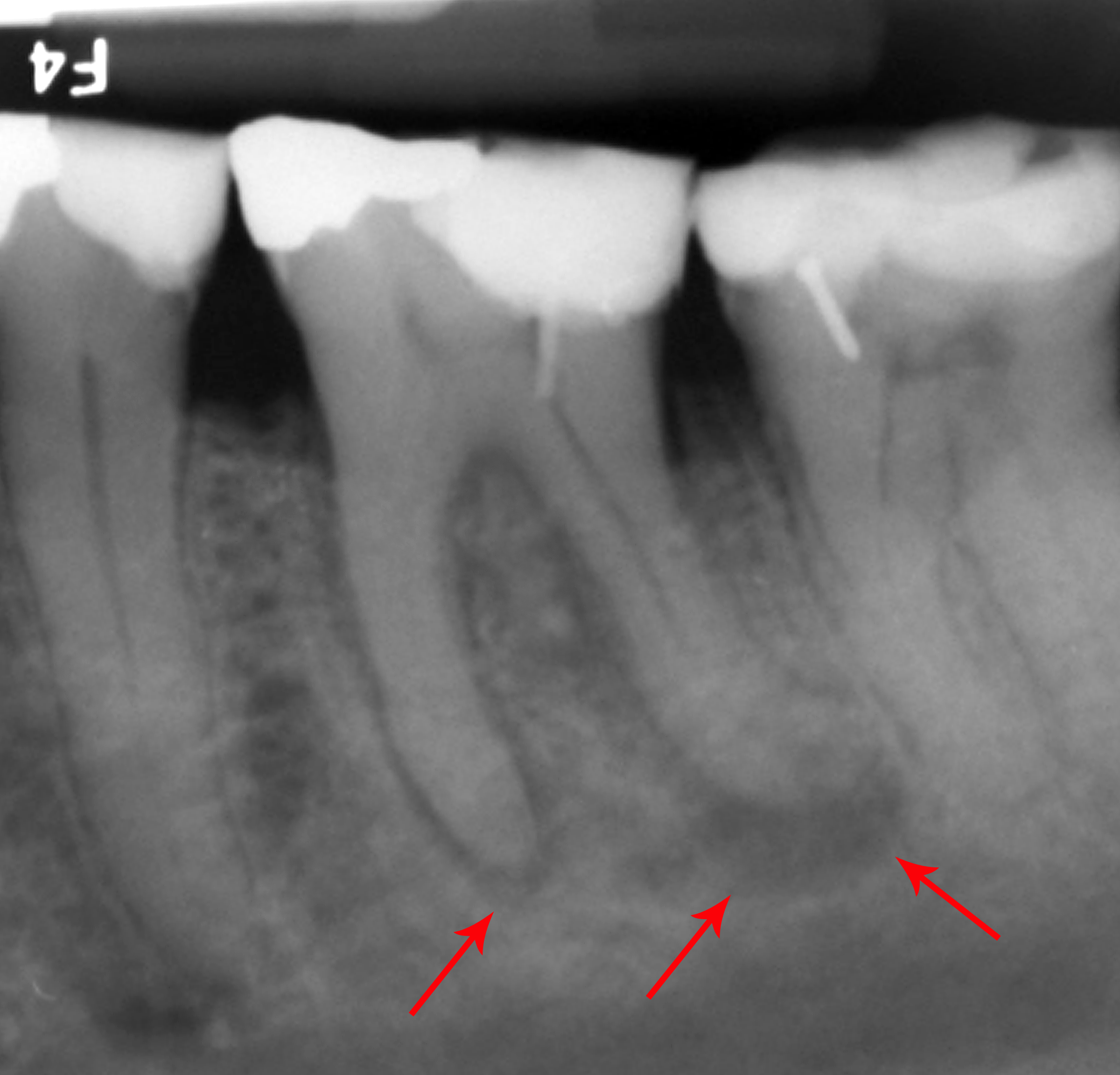When harmful bacteria cause an infection in a tooth or in the gums, there is a chance that an abscess will form. Pus gathers at the source of the infection, appearing as a lump or boil. This inflammation will often make the area swollen and painful.
Getting a diagnosis of an asbcess, or suspecting you might have one because of pain, likely has you wondering where it came from and what comes next. Abscesses can be common, and are easily treated. There are a few different things that can create the type of environment in the mouth where an infection will grow. Luckily, a trip to the dentist can bring relief and take care of the problem.
Types of Tooth Abscesses
Finding the cause of an abscess depends on where it forms. There are three types of abscesses that can happen in the mouth:
Periapical Abscess
A periapical abscess forms at the tip of a tooth’s root. It starts when the dental pulp at the core becomes infected. Pus builds up, causing inflammation and a painful toothache.
Periodontal Abscess
Periodontal abscesses start on the outside surface of the tooth rather than in the pulp chamber. As the infectious pus collects, the gum beside the root will swell and become red and inflamed. The resulting lump on the gum tissue can become very sensitive and sore.
Gingival Abscess
A gingival abscess is also in the gums rather than inside the tooth. Instead of starting at the tooth like a periodontal abscess, it forms on the outer gum tissue known as the gingiva. Gingival abscesses may be isolated to the gum and might not affect a tooth’s health at all.
What Can Cause an Abscess in a Tooth

Patients may wonder if an abscess formed because of something they did or did not do. While good oral hygiene is important for tooth health, it is not a guarantee that an abscess will never grow. However, poor brushing habits, a bad diet, and smoking can all contribute to the possibility of bacteria buildup and infection, making an abscess more likely.
Anything that allows bacteria into a tooth or beneath the gum can give an infection the opportunity to take hold. When an abscess forms in a tooth, it is because an infection has either gone unnoticed or untreated.
It is not particularly unusual for a patient to be caught by surprise by an abscess. Infections do not always hurt at first, and an abscess can pop up quickly. The following things might cause a dental abscess:
- Tooth Decay. Once a cavity forms, it will continue to get bigger and deeper unless it is filled. Once its bacteria reaches the center of the tooth, it will start to infect the nerves and blood vessels there, which might create an abscess.
- Trauma. A cracked or broken tooth gives bacteria an entryway into the inside of a tooth. If it isn’t repaired, this might result in an abscess.
- Surgical Complications. Dental surgery such as an implant, root canal procedure, or periodontal scaling, can sometimes fail or end up damaging tissue. Or, old dental work might start to deteriorate. These cases are rare, but if bacteria sneaks in, an abscess might form.
- Gum Disease. Periodontal abscesses can form if gum tissue becomes inflamed and infected.
- Gum Injury. If a piece of food lodges deep between the gum and tooth, or if a toothpick or dental tool scrapes the gum, an infection could occur. A bad scratch or puncture on the gum tissue might not seem serious, but it can cause a gingival abscess.
Additional risk factors include anything that might contribute to these situations. For example, a sugary diet and lack of good oral hygiene will make cavities and periodontal disease more likely. And a weakened immune system may not cause dental problems, but it will increase a patient’s vulnerability to infections. Addressing these issues can help prevent another abscess in the future.
Signs You May Have a Tooth Abscess
Patients may not realize right away that they have an abscess, they will be aware that something is wrong. Abscesses are often quite painful and hard to ignore. These are the common symptoms of an infection or an abscess:
- A throbbing toothache, with pain possibly radiating to the jaw, neck, or ear
- Sensitivity to hot and/or cold
- Pain when pressure is applied (for example when chewing)
- A red, painful lump (filled with pus) on the gum
- Swelling in the face and cheek
- A bad smelling, bad tasting fluid in the mouth if the abscess ruptures
Contact a dentist right away for any of these symptoms. Abscesses will not go away by themselves. When an abscess breaks and drains, there is often some temporary relief as the pressure on the nerves is released. But this does not mean the infection is gone. A dentist still needs to take care of removing the infection and treating the underlying problem with the tooth.
There are some additional symptoms that may or may not appear with an abscess. These could indicate that the abscess is very serious and the infection is spreading:
- Fever
- Swollen lymph nodes
- Difficulty breathing or swallowing
If any of these additional signs show up, the situation should be treated as an emergency. Make an appointment with the dentist immediately. If one is not available and symptoms worsen, go to a doctor or the emergency room.
Treating an Abscessed Tooth

Taking care of a tooth abscess right away will help relieve the pain and discomfort and keep the infection from spreading further. Ignoring it can cause more serious problems. Abscesses can even be life threatening if the infection moves to the surrounding bone or the bloodstream. At the very least, the patient will almost certainly lose the affected tooth.
Once a dentist determines that a patient has an abscess, they will decide on the best treatment.
First, they will incise (puncture) the abscess and drain out the pus. The area will then be washed thoroughly with saline. In the case of a gingival or periodontal abscess, this might be all that is necessary. If the teeth are intact and have no signs of infection, the gums can heal after draining and cleaning.
When the tooth’s pulp chamber is infected, the dentist will typically do a root canal procedure. They, or an endodontist, drills into the tooth, cleans out the infected tissue, and fills in the empty space. The tooth is then covered with a crown.
Dentists will always opt to save a tooth when possible. If the abscess is too severe, however, they may recommend pulling it as a last resort. After a tooth extraction, the patient may need an implant or dentures to help support the rest of the teeth.
In many cases, dentists will prescribe antibiotics following a procedure to take care of an abscess. This will ensure that the infection is completely removed and has no chance to spread. To relieve discomfort while the mouth heals, they may also suggest rinsing with warm salt water and over-the-counter pain medications.
Do Not Ignore a Tooth Abscess
A tooth abscess calls for quick action. Get dental treatment to fix it as soon as possible or you may risk losing a tooth or suffering serious health issues. Better yet, see a dentist twice a year for a checkup and catch cavities and injuries before they have a chance to develop into an infection. If you do not have a dentist, use our search tool to make an appointment with one in your area.


